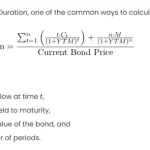Accrued interest is the amount of interest that has been earned or owed on a loan or other financial obligation, but has not yet been paid. It is calculated based on the time period between the last payment date and the current date. Accrued interest is recorded in the accounting period when it occurs, not when it is paid, following the accrual accounting method. Accrued interest can be an asset or a liability, depending on whether the company is lending or borrowing money. For example, if a company lends money to another company and receives interest payments every month, the accrued interest at the end of the month is the interest revenue that the lender has earned but not received. On the other hand, if a company borrows money from a bank and pays interest every month, the accrued interest at the end of the month is the interest expense that the borrower has incurred but not paid.
Basic Theory:
Accrued interest is calculated based on the nominal interest rate, the principal amount, and the time period for which interest has accrued. The formula for accrued interest is:
Accrued Interest = (Nominal Interest Rate * Principal Amount * Time Period) / Number of Periods in a Year
Procedures in Excel:
To calculate accrued interest in Excel, you can use the following formula:
= (Nominal Interest Rate * Principal Amount * Time Period) / Number of Periods in a Year
Here’s a step-by-step guide:
- Open Excel and enter the necessary data into a new worksheet. Include the nominal interest rate, principal amount, time period, and the number of periods in a year.
- In a cell, input the formula mentioned above, replacing the variables with the corresponding cell references.
- Excel will automatically calculate the accrued interest based on the provided data.
Explanation:
Let’s consider a scenario where you have a principal amount of $10,000, a nominal interest rate of 6%, and the interest needs to be calculated for 3 months.
Principal Amount = $10,000
Nominal Interest Rate = 6%
Time Period = 3 months
Number of Periods in a Year = 12
Example Calculation:
Accrued Interest = (0.06 * 10,000 * 3) / 12 = $150
Excel Table:
| A | B |
|---|---|
| Principal Amount | $10,000 |
| Nominal Interest Rate | 6% |
| Time Period | 3 |
| Number of Periods/Year | 12 |
| Accrued Interest | =B2 * B3 * B4 / B5 |
Result:
The calculated accrued interest using the provided example is $150.
Other Approaches:
- DATEDIF Function:
Excel has a DATEDIF function that can be useful for calculating the number of days between two dates. You can use this in conjunction with the basic interest formula to calculate accrued interest based on the actual number of days. - PMT Function:
For loans or bonds, the PMT function in Excel can be employed to calculate interest for a specific period. This function is particularly useful when dealing with irregular payment periods.
